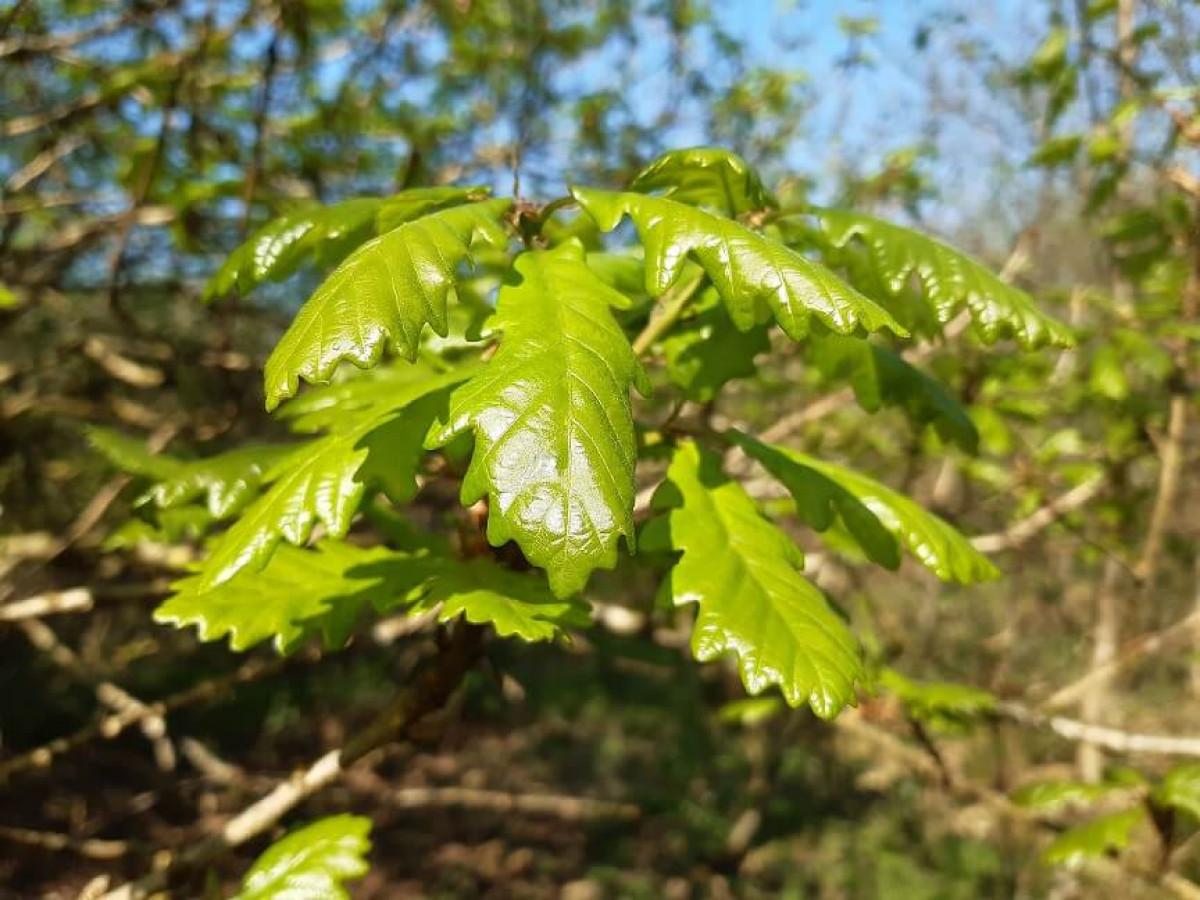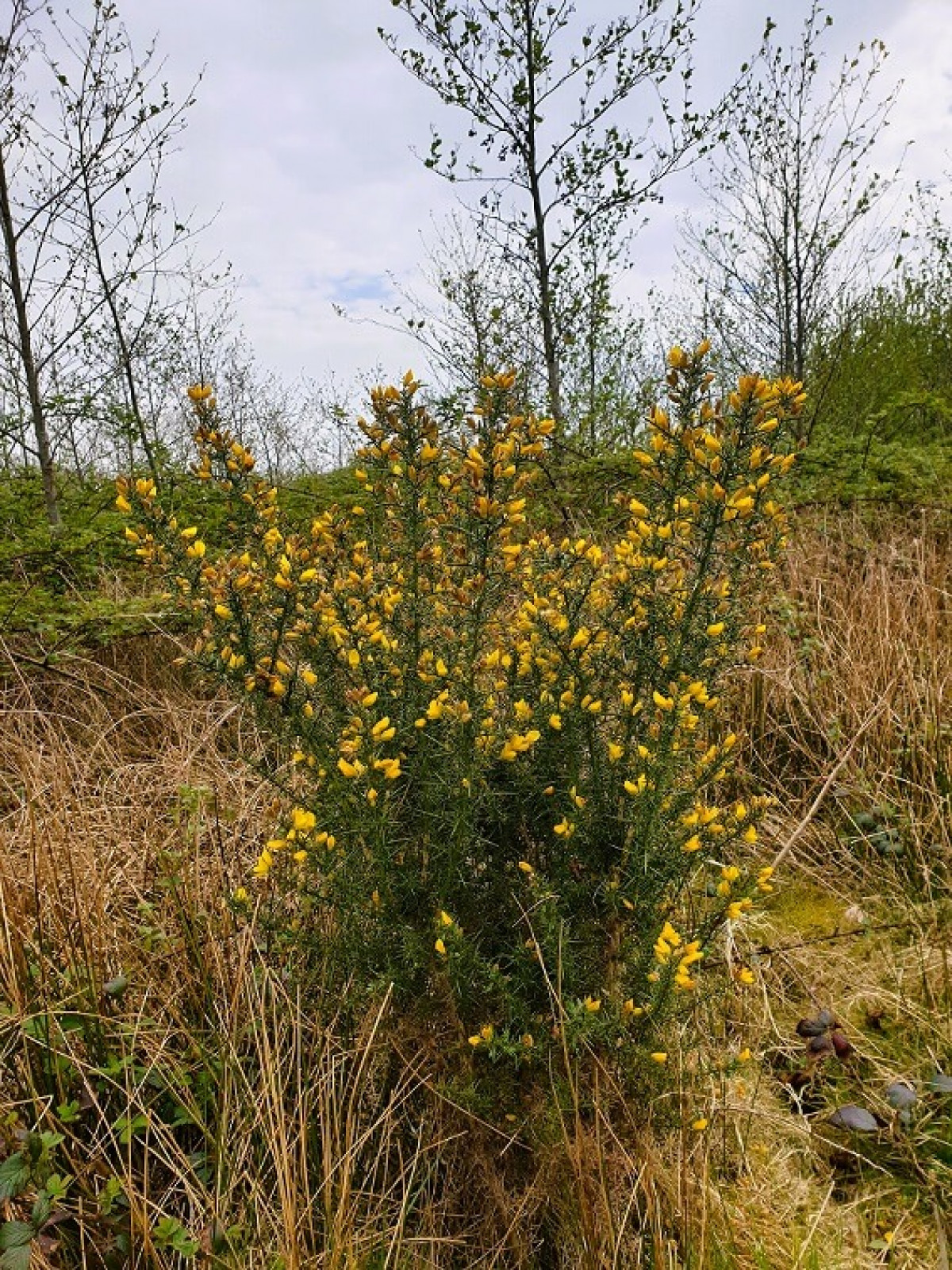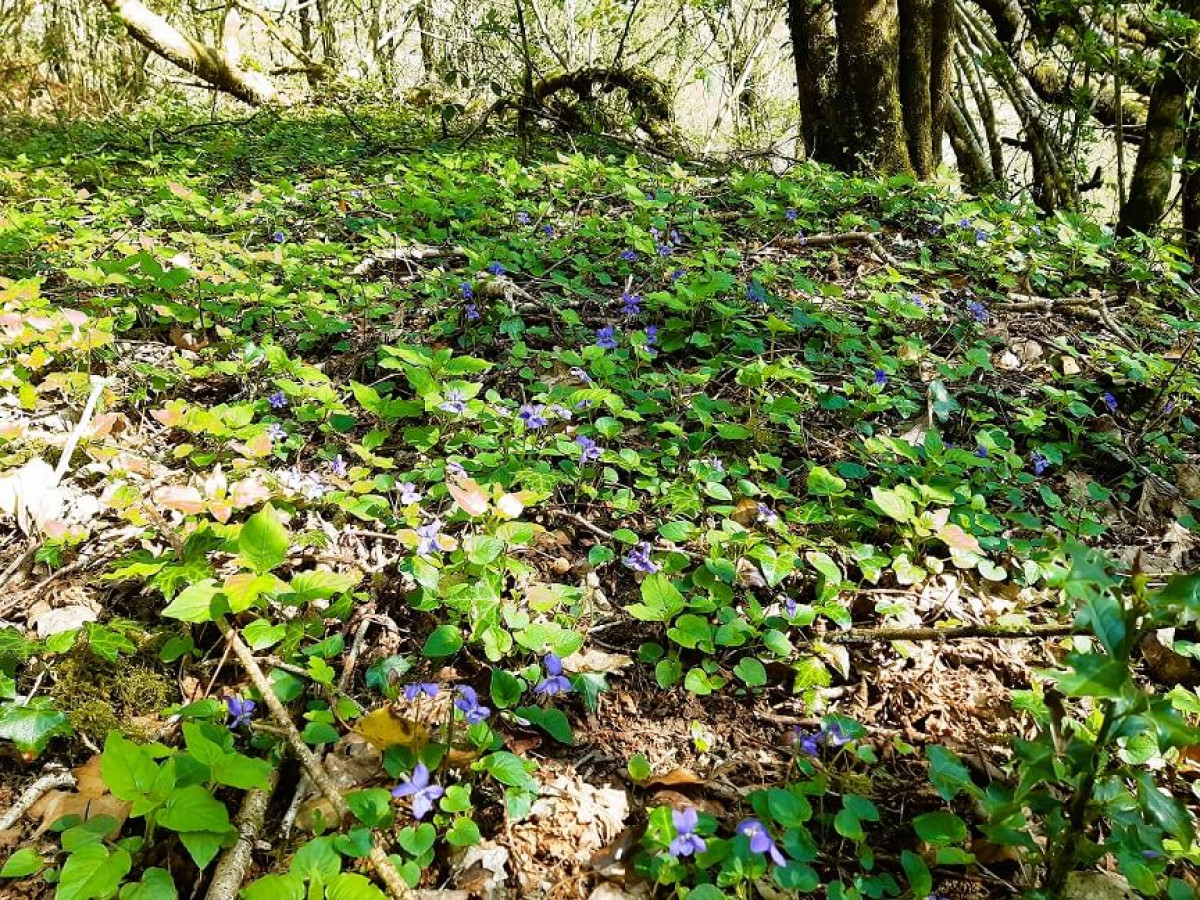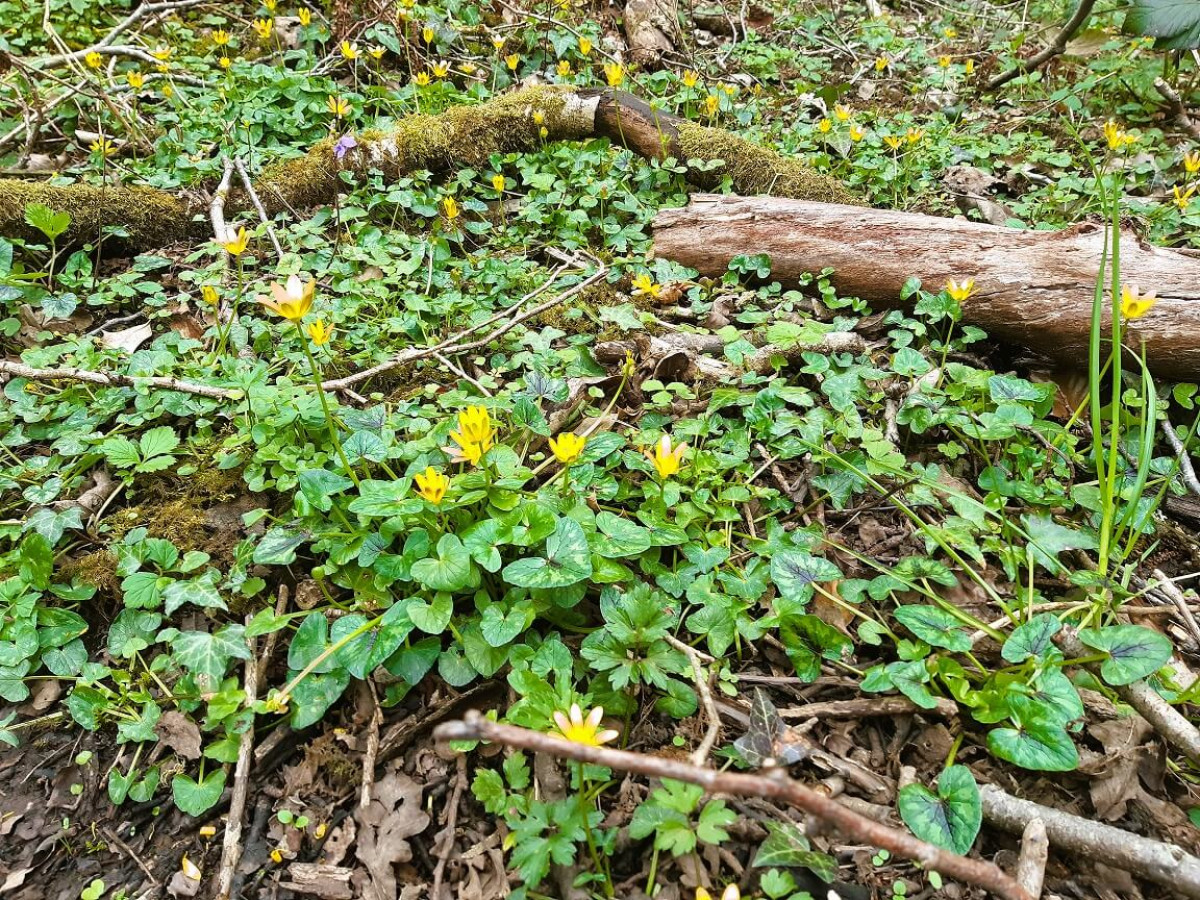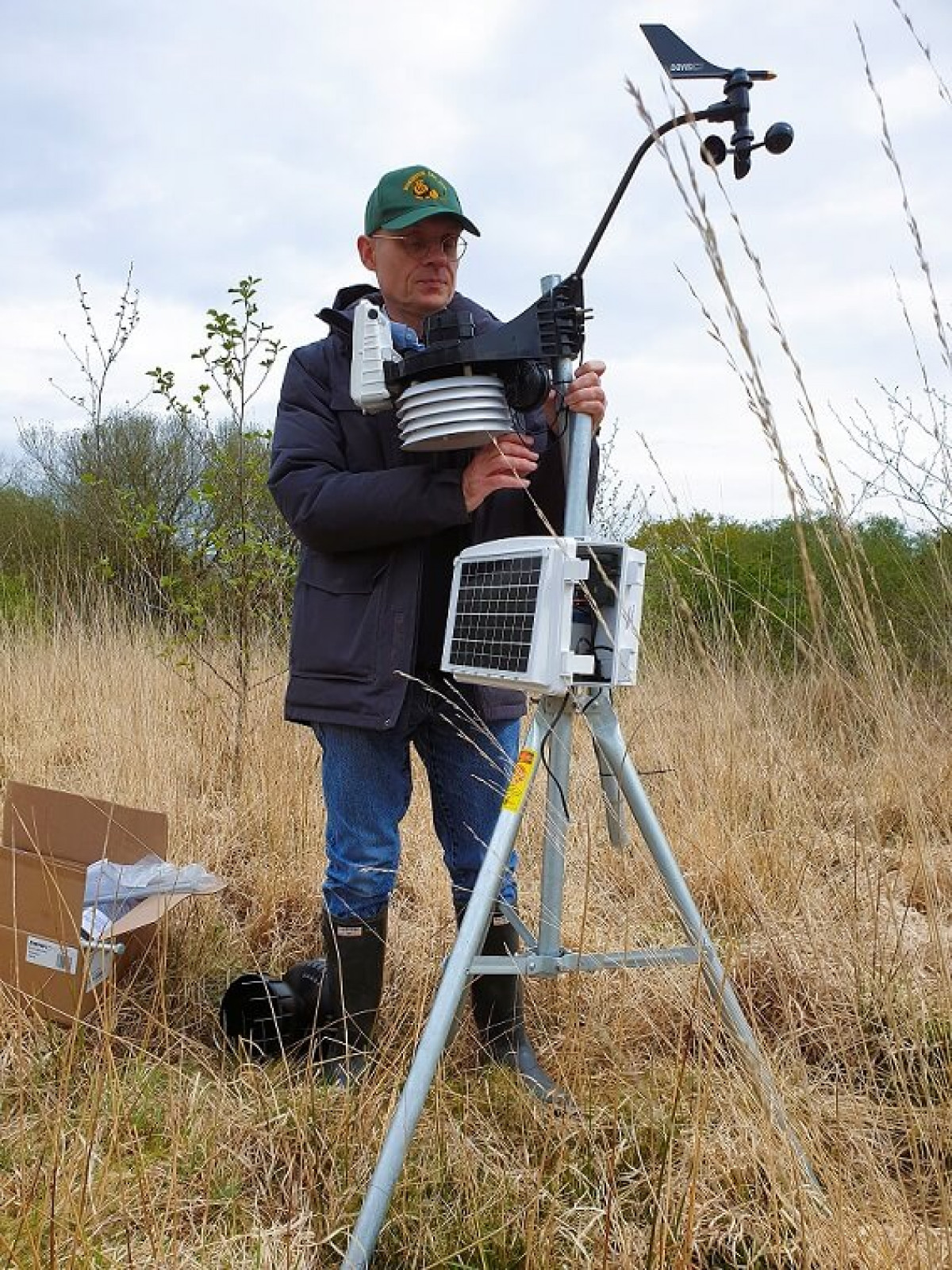03 June 2022
Olaf Wood - Tree, Plant and Bird Surveys in April 2022
Axel and Sophie went down to Olaf Wood in April to hunt for spring colours and found lots of bluebells, an indicator of ancient woodland. We took more soil samples and did some basic tree, plant and bird surveys.
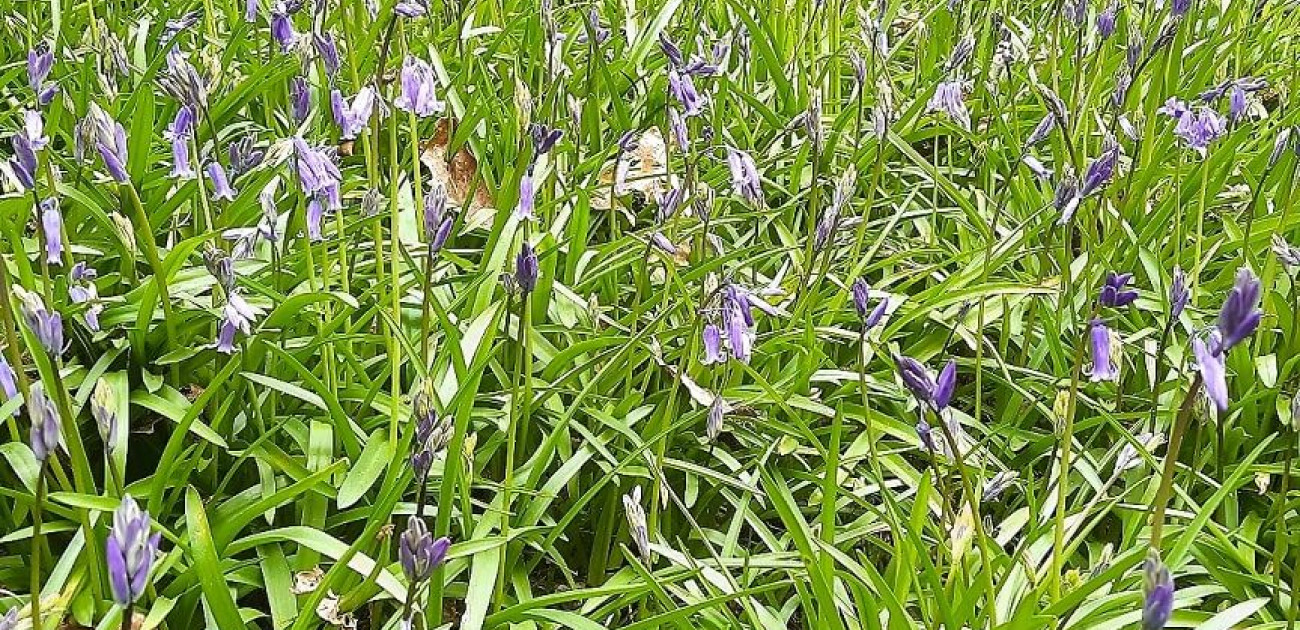
Whilst tree planting and litter picking were the more active and immediate environmental activities that we did in April, we have also continued with data gathering. As Sophie said to me, “it’s just one big science project, isn’t it?” and in many ways she’s spot on.
Data collection is important for several reasons:
- Data For Decision-Making: To provide the data to help us make decisions on the planting, so for example the soil is acidic and wet, so the trees take heed of this.
- Ecological Baseline: To give us an ecological baseline, which will allow us to analyse how the trees, other plants and biodiversity is progressing through time. If needed, we can then make any adjustments we need to in how we manage the habitats.
The soil sampling is progressing slowly but surely, and we’ve nearly completed the first phase of sampling across the whole 50 acres. I’ll come back to the detail in the future.
For the weather station, we chose a Davis weather system, purchased from ProData Weather Systems. The system we purchased was an integrated sensor suite that measures wind speed and direction, temperature and humidity, rainfall, and barometric pressure (for anyone interested, it is the Davis Vantage Pro 6322C(M) Cabled Sensor Suite). This is then powered using the EnviroMonitor Gateway which also sends the data via the cloud in 15-minute intervals; it is solar powered with a back-up battery (the 6801 EnviroMonitor Gateway). The Sensor and Gateway were then mounted on a mounting tripod with ground spikes. Together with activation fee for SIM and an Annual Gateway Data Plan, this cost £1,500.
Setting it up was simple from a physical perspective. We put it together in two parts at home, cabling everything up except for the power as I did not want to start getting weather data from North Yorkshire when the final setup was to be in South Wales. This was a mistake as our first attempt at activating the weather system was a failure.
Not because we couldn’t put the physical system together – that was no problem – and we were able to get a good mobile signal (4 bars of signal so we could download the apps without any issue), but because I couldn’t follow the instructions of how to set the system up via the app. That just shows my age – quite capable of physically setting these things up but I get stuck on the technical side. So, it needed ProData to do the final set up.
The groundwater level sensors were set up for us by Rigare, so that was much simpler for us. Rob Low used two Solinst Levelogger 5 Water Level Dataloggers, with 1 metre deep dipwells, linked to a barologger that will provide additional readings on barometric pressure, which can be cross-checked to the Davis weather station. These cost £950 per set.
So, we are now getting regular data on weather and water levels for the land, which will help us understand what the weather actually is in Garnant, and through time will give an insight into the impacts of climate change, while the water dipwells will show how water moves across the land, and the groundwater levels can be analysed against the barometric pressure and rainfall. We’re not sure how these will impact our decisions going forward, but they will validate the desktop information we have used to develop the woodland creation plan and the management plan. Plus, these nerdy things interest me in and of themselves.
In terms of baseline surveys, this year we are doing a tree survey of the established woodland areas (John Searl Forestry), a vegetation survey (Martin Page of Cheshire Ecology) and then several surveys via INCC, a local wildlife charity based in Garnant. INCC’s surveys are for: breeding birds, reptiles, dormice, bats, and moths & butterflies. For anyone that noticed that I needed an additional trip to set up the weather station, I was already down to meet with Martin Page, so there was no extra environmental impact from that journey.
When we get their reports, I will update you on what they said.
However, we did our own little surveys, as we were ostensibly there to see whether there were any bluebells – there were. We saw a common lizard this time and saw common frogs last autumn, plus this time there were loads of spiders, butterflies, etc., but these were just ad hoc observations.
Sophie did the bird survey one sunny afternoon and totted up 25 different ones: blackbird, blackcap, buzzard, chaffinch, chiffchaff, coal tit, common sandpiper, crow, dunnock (or little brown jobs, LBJs), goldfinch, grasshopper warbler, great spotted woodpecker, great tit, green sandpiper, jay, mistle thrush, northern wheatear, pigeon, red kite, robin, short-toed tree creeper, starling, willow warbler, and wren, yellow hammer. That’s not too bad for a quick check.
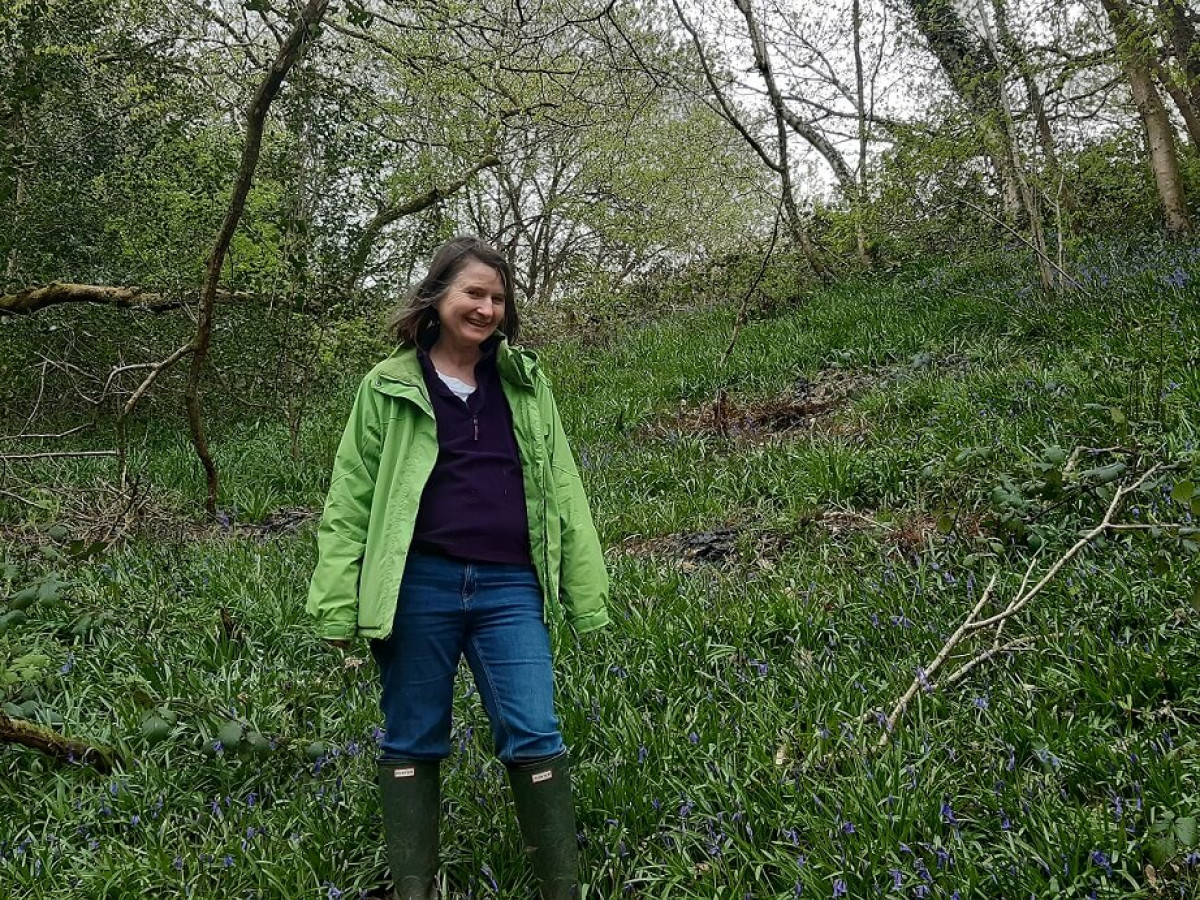
For woodland plants, Axel came across lots of patches of bluebells and two huge swathes of flowering bluebells. Also, he found angelica, bilberry, bluebell, bramble, common dog violet, gorse, bracken (just unfurling in April and looking like strange aliens), foxglove (not flowering yet in April and still quite low), greater stitchwort, ivy, lesser celandine, nettle, common polypody fern, Welsh poppies, willowherb, wood sorrel, and wood spurge. I didn’t find any wood anemone, something I’d have expected, but that may have just been bad timing. The common polypody ferns are interesting as they are growing high up on the big branches of the oaks; they probably get enough moisture from the low-lying clouds that are typical of the Amman valley and further west in Wales. Martin Page is the expert on grassland flowers, so I have not attempted to record those, but we did find cuckoo flower.
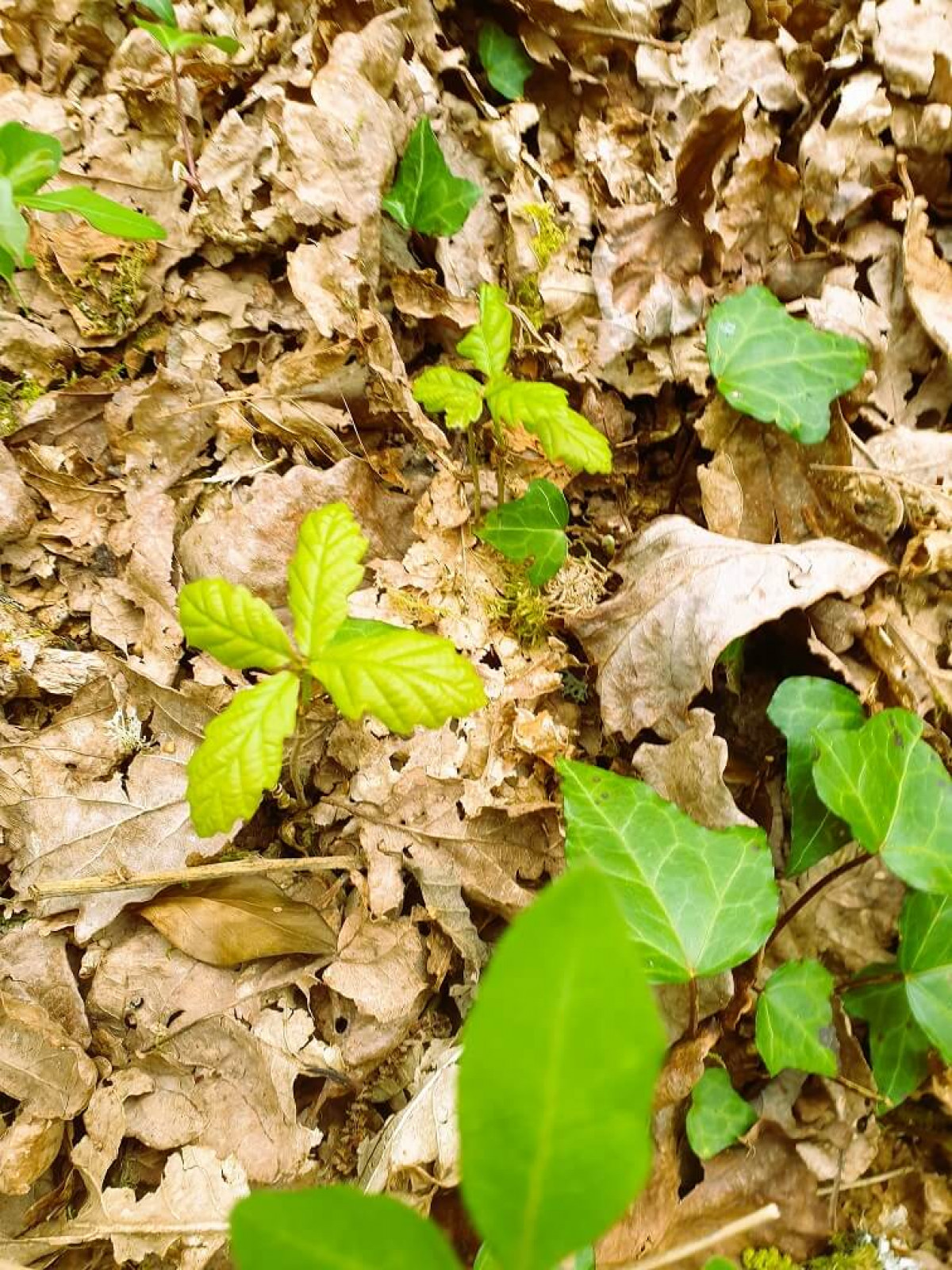
In the older woods in April, small sessile oaks were found sprouting up from the woodland floor in the steeper valley sides. This gives hope for regeneration in this area, but the dying ash is a concern for succession, so we may need to look at introducing sycamore as an alternative. Sessile oaks dominate the valley slope, with hazel comprising most of the understorey. In the southern wood, there is a patch of alder by the stream, then oaks and hazel on one part of the slope and in another section, birch, alder, oak, and cherry with a hazel understorey.
The trees we’ve identified so far are: alder, ash (dying because of ash dieback), blackthorn (beautiful white flowers during our April visit), cherry, crabapple, crack willow, downy birch, elder, field maple, goat willow, hazel, holly, rowan, sessile oak, and silver birch. There's also a suggestion of black poplar but that has not yet been confirmed. All-in-all that’s a decent enough sample of native British trees.
While there is nothing special about the land, or so we keep on being told, it is more than special for us – it acts as a carbon sink and has plenty of biodiversity and natural interest for both Sophie and me. And, as always, it was very refreshing to our spirits to reconnect with nature.
